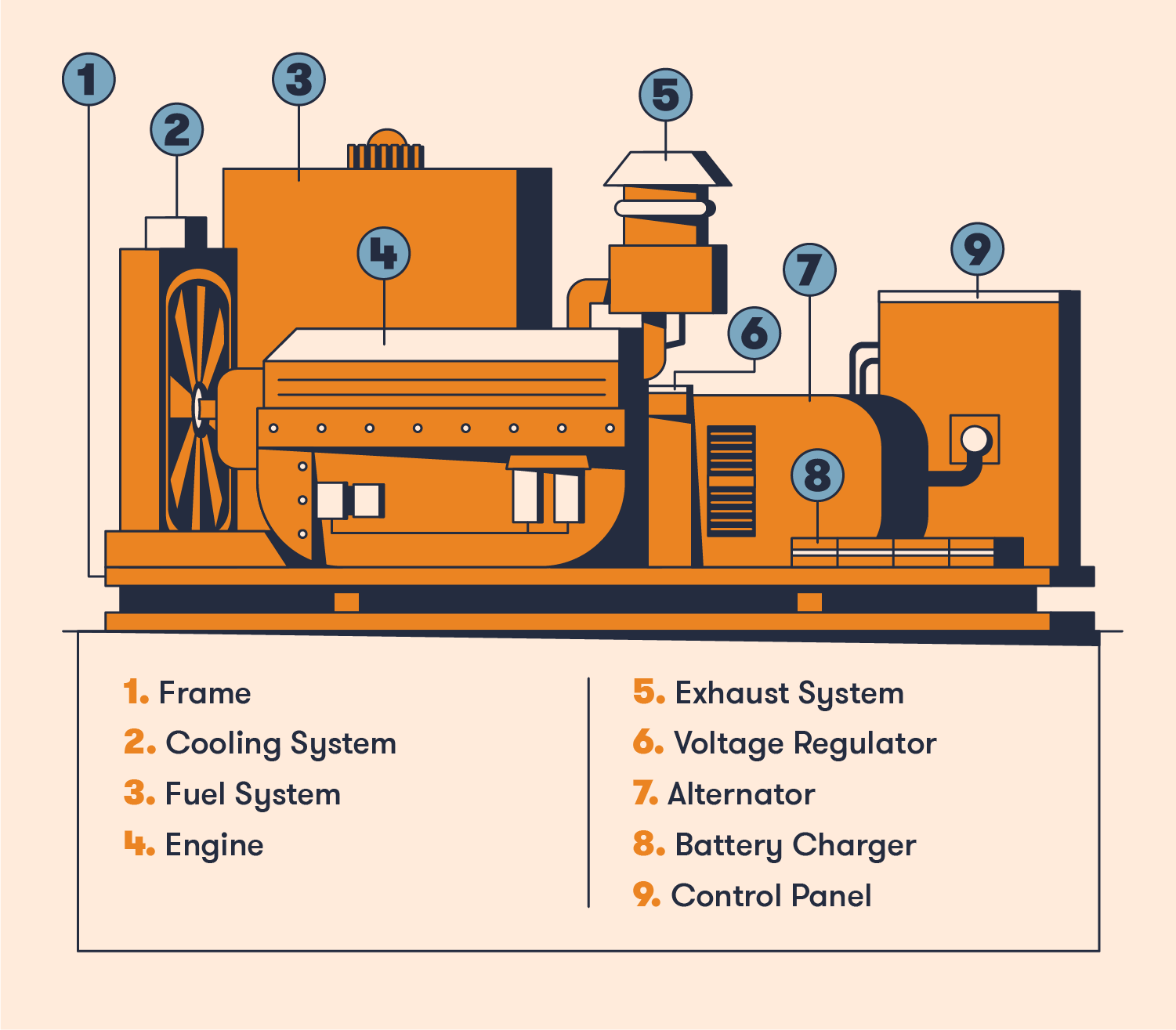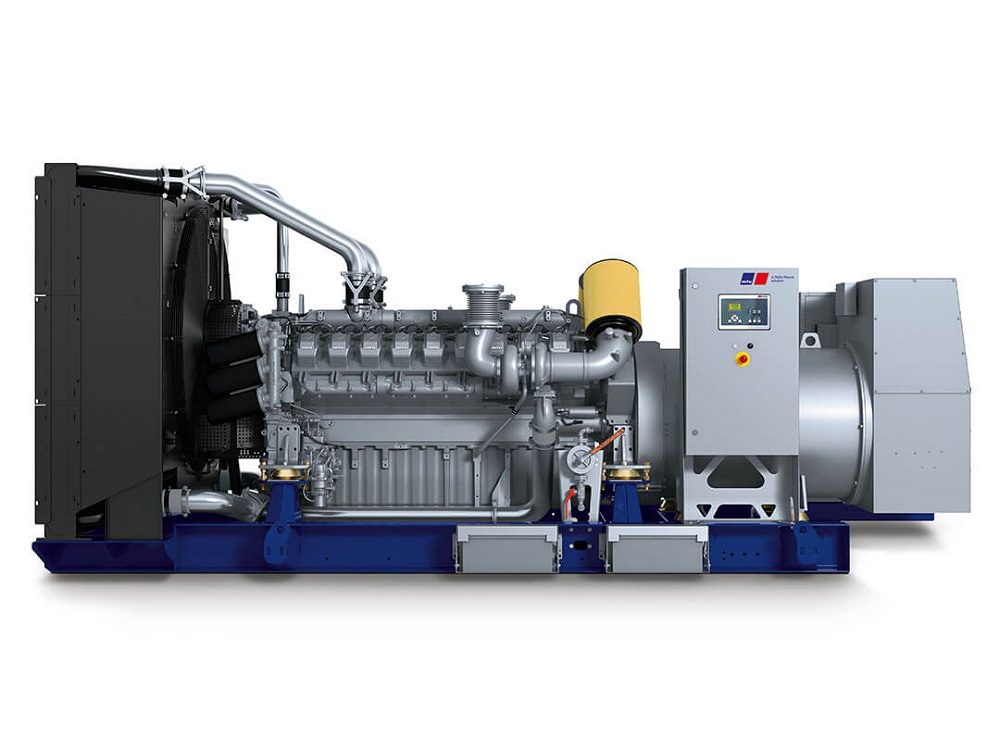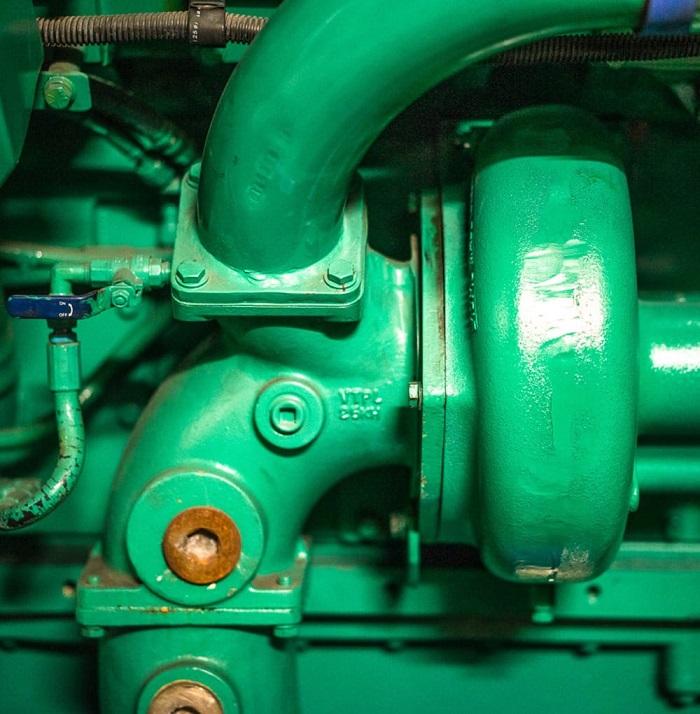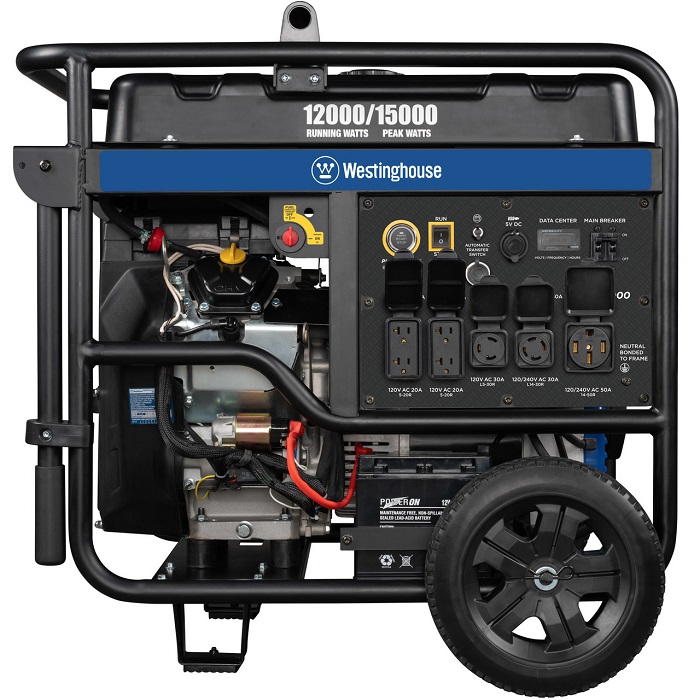Generators are devices that provide electricity when power from the local grid is unavailable. They are often used to supply backup power to facilities, businesses, or homes during power outages but they can also be used as a primary power source in areas where a local electrical grid is unavailable or difficult to access such as mining and farming operations or even new developments and construction. Therefore, by knowing every part of the generator, you can be better prepared for when the generator breaks down during use. Read this new blog in Linquip and enjoy effortless learning!
Linquip is the best place to look for everything you need to know about generators. If you have a generator question, our experts are available to help. Start by reading Linquip’s article “What Is a Generator?” to gain a basic understanding of these industrial devices.
Do you have any experience with generators? You can find what you’re looking for by browsing our selection of Generator Products. What type of generator are you seeking? Linquip provides free access to all available Generator Devices for Sale. For generator prices, Linquip allows you to submit a free quote request/inquiry to all Generators Suppliers and Companies.

Each part of the generator in detail
10 Parts of the Generator are:
- Engine
- Fuel System
- Voltage Regulator
- Alternator
- Cooling System
- Exhaust System
- Lubrication System
- battery
- Control Panel
- Main Assembly Frame
Let’s get into knowing the different parts of a generator and its function to get an overall idea of what components generators consist of. Here is a generator parts list.
-
Engine
Every machine contains an engine, which generally converts the fuel source into usable energy and allows it to move or perform its mechanical function. For this reason, engines are sometimes called the machine’s prime mover. In a generator, the engine uses its fuel source (gasoline, diesel, natural gas, propane, bio-diesel, water, sewage gas, or hydrogen) to create mechanical energy the generator will convert into electricity. Each generator engine’s design aims to create a maximum supply of electrical current by running on a specific fuel or other power source. Some engines commonly used in the design of generators include reciprocating engines, steam engines, turbine engines, and microturbines.
-
Fuel System
Generators running on fuel have a system that stores and pumps the appropriate fuel to the engine. The tank stores enough fuel to power a generator for an equivalent number of hours. The fuel pipe connects the tank to the engine, and the return pipe connects the engine to the fuel tank for the return of fuel. The fuel pump moves the fuel from the tank through the fuel pipe and to the engine. A fuel filter filters any debris from the fuel before delivery to the engine. The fuel injector atomizes the fuel and injects it directly into the combustion chamber of the engine.
-
Voltage Regulator
Here, we have the most complex part of the generator. The voltage regulator serves to regulate the voltage output. There is too much that happens here to explain in this article alone, that we would probably need an entirely separate piece to describe the whole voltage regulation process.
In simple terms, it ensures that the generator produces electricity at a steady voltage. Without it, you would see massive fluctuations dependent on how fast the engine is working. No need to say, all the electrical equipment we use will not be able to handle such an unsteady power supply. So, this part works its magic to keep everything smooth and steady.
-
Alternator
It is essentially the component that is responsible for generating power output. Here, we see the concept of electromagnetic induction come into play.
An alternator consists of many complex components, but one of the most crucial aspects is the rotor. This is a shaft that rotates driven by the mechanical energy supplied by the engine with multiple permanent magnets fixed around it. In doing so, this creates a magnetic field.
This created magnetic field continuously rotates around another critical part of the alternator: the stator. Simply put, this is a variation of different electrical conductors that are tightly wound over an iron core. Here is where things start to become slightly more scientific. According to the principle of electromagnetic induction, if an electrical conductor remains stationary and a magnetic field moves around it, then an electrical current is induced.
In summary, the alternator takes mechanical energy created by the diesel engine, which drives the rotor to create a magnetic field that moves around the stator, which in turn generates an alternating current.
-
Cooling System
A cooling system works to help prevent your generator from overheating. There is a coolant released in the generator that counters all the additional heat energy produced by the engine and alternator. The coolant then takes the heat through a heat exchanger and gets rid of it outside of the generator.

-
Exhaust System
The exhaust system collects the hot gases generated from the combustion and routes them out to the atmosphere. Besides, it also helps to reduce the noise caused by the high-speed flow of these gases. The air intake system works in conjunction with the exhaust system in the turbocharged engines to pull the fresh air through the filters to the cylinders.
-
Lubrication System
This part of the generator attaches to the engine. It pumps the oil through the engine to minimize the effects of metal to metal contact that causes both sliding and rolling types of friction, and to absorb a great amount of generated heat to achieve smooth performance and lengthen the life of the internal parts of the engine.
Functionally, the main task of the lube oil system is to supply clean lubrication oil under the required pressure and circulate it inside the engine.
-
battery
The Battery is a storage device for the energy which is supplied by the battery chargers. It stores this energy by converting the electrical energy to chemical energy and then to electrical energy. It provides power to the cranking motor to start the engine. It supplies the extra power necessary when the engine’s electrical load exceeds the supply from the charging system. It also acts as a voltage stabilizer in the electrical system, where it evens out voltage spikes and prevents them from damaging other components in the electrical system.
-
Control Panel

Here is where the generator is controlled and operated. On an electric start generator, you will find a whole host of controls here that allow you to do different things or check specific figures. It could include anything from the start button and a frequency switch to an engine fuel indicator, coolant temperature indicator, and much more.
-
Main Assembly Frame
Every generator needs to be contained somehow, and this is what the main assembly frame is. It houses the generator and is where all the different parts are built onto. It keeps everything together, and it can be an open design or closed (canopied) for added protection and sound attenuation. Outdoor generators are typically housed in a protective frame that is waterproof to prevent damage.
What Are the Different Types of Generator Cooling Systems?
Different generator set manufacturers offer different options for designing the cooling system. The two types of cooling systems most extensively used are closed-loop and open-loop systems. Typically a closed-loop system is comprised of one or more cooling pumps, one or more cooling fans, and radiators, which are all mounted on a skid. Containers and trailers as well are available as options. The open-loop system is generally used in marine applications, but the system can also be used where there is an acceptable body of water.
So, there you have a detailed description of each part of the generator which works together to provide electricity. If you enjoyed this article in Linquip, let us know by leaving a reply in the comment section. Is there any question we can help you with? Feel free to sign up on our website to get the most professional advice from our experts.
Buy Equipment or Ask for a Service
By using Linquip RFQ Service, you can expect to receive quotations from various suppliers across multiple industries and regions.
Click Here to Request a Quotation From Suppliers and Service Providers
Download Parts of Generator PDF
We have provided you with the possibility to download the PDF version of this document to your computer. You can start the download by clicking on the links below.
Read More on Linquip
- Caterpillar Industrial Diesel Engines Products
- Caterpillar Heavy Duty Diesel Engine Products
- Caterpillar Marine Diesel Engines Products
- Caterpillar Heavy Duty Gas Engine Products
- Caterpillar Diesel Generator Set Products
- Caterpillar Heavy Duty Diesel Generator Set Products
- Type of Generator: Learn the Basics, Get the Most Out f it!
- Generator Maintenance: The Most Essential Tips to Know
- Diesel Generator Parts: A Complete Description
- Generator Efficiency
- What Is a Generator? A Comprehensive Explanation of Working Principles, Types, and Components
- Parts of DC Generator: Explanation of Parts, Working, Types, Advantages & Disadvantages
- Efficiency of Diesel Generators
- Induction Generator vs Synchronous Generator: A Comprehensive Comparison
- The Difference Between Generator and Inverter: All You Need to Know
- Concise Guide to Generator Transfer Switch Installation Cost
- What are The Electric Generator Parts?
- Electric Generator Maintenance, Repair, and Services
- Gasoline Generator Repair and Maintenance
- How Much Does It Cost to Install a 22kW Generac Generator?
- DC Generator Repair, Maintenance & Testing (Full Guide)
- Pros and Cons of Inverter Generators
- The 5 Best Propane Generators
- The 9 Best RV Generators (Clear Guide)
- The 10 Best Ozone Generators (Ultimate Guide)
- The 3 Best Portable Power Station Generators +Pros & Cons
- The 10 Best Dual Fuel Generators (Clear Guide)
- The 10 Best Quiet Generators
- The 7 Best Whole House Generators
- The 7 Best Steam Generators
- The 10 Best Inverter Generators + Review
- More Details about Siemens Generators
- More Information about Siemens Generators Services
- Read More Information about Siemens Generator Installation Services
- Read More Details about Siemens Generator Maintenance Services
- More Information about General Electric (GE) Generators
- More Information about GE Generator Services
- More Details about GE Generator Installation Services
- More Details about GE Generator Maintenance Service
- What are Alstom Generators? (Clear Guide)
- How To Store Your Generator Safely? (Clear Guide)
- How To Quiet A Generator? (Comprehensive Guide)
- How Do I Choose The Right Generator For My Needs?
- How to Calculate The Fuel Consumption of the Generator?
- How Do I Maintain The Battery of My Generator?
- How Long Can a Generator Run Continuously?
- How to Use a Portable Generator During a Power Outage?
- Why Do We Use AC Instead of DC? Exploring the Advantages of Alternating Current
- Main Benefits of Generators for Disaster Response
- How To Clean Up Generator Power? (Clear Guide)
- What Are The Benefits of Generators?
- Do Generators Work In A Flood? (What to Do If Your Generator Is Flooded?)
- Can A Home With Solar Panels Use A Generator?
- Converting Your Generator To Propane: Step By Step (Clear Guide)






Can I buy individual generating components?